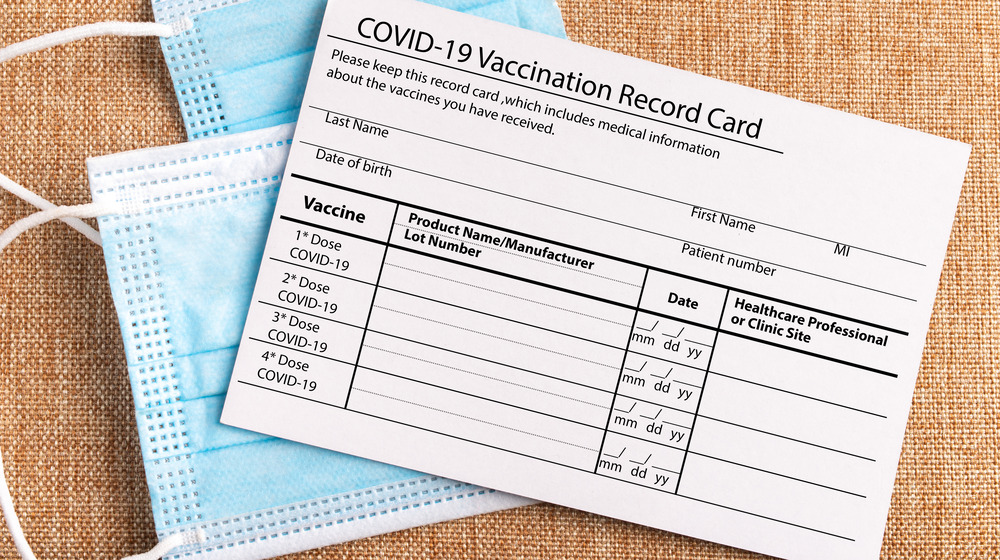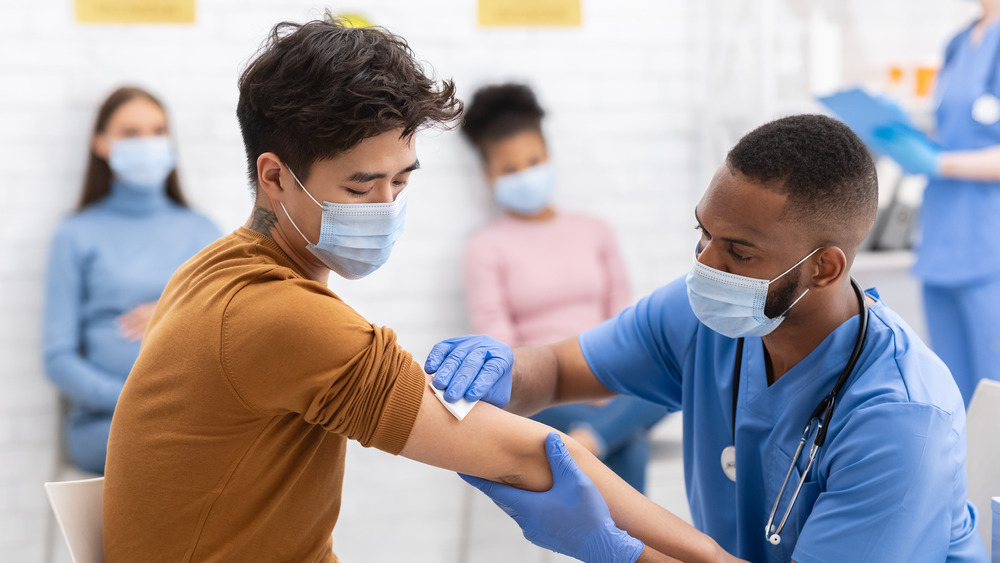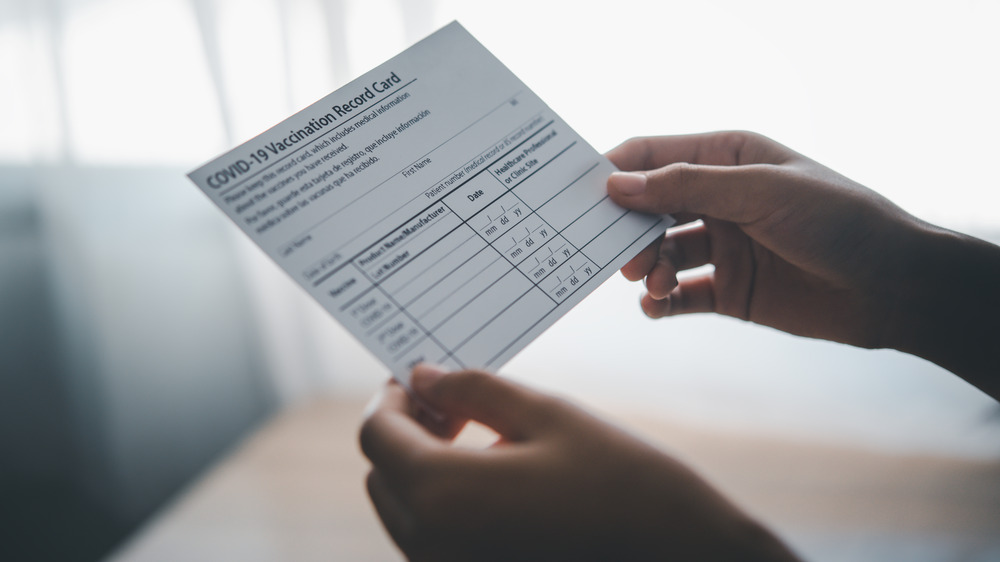Do This Before Laminating Your COVID-19 Vaccine Card
As we rapidly approach summertime, a popular season for travel, you may find your checklist of required documents expanding to include your ID, your passport, and possibly your COVID-19 vaccination card. As vaccinations across the country are currently underway, this postcard-sized paper slip is being used by healthcare providers to keep records of who received what dose of the vaccine and when, as well as to help individuals track the dates of their own shots should they need to return for a second dose (via Forbes).
Depending on which brand of the vaccine you receive, Pfizer, Moderna, or Johnson & Johnson, you may only need to receive one shot or you may require two separate doses on two separate dates (via Medium). According to the Centers for Disease Control and Prevention, the timing of your shots is critical for the vaccine to be most effective. For those receiving the Pfizer vaccine, doses will need to be spaced 21 days apart from one another. For Moderna, doses should be administered 28 days apart.
As a general rule, the CDC urges citizens to stick to the three or four weeks apart guidelines as outlined by health and disease prevention experts. Should individuals be unable to receive their second dose within that time frame, the CDC states that the second shot is still deemed safe and effective if given as many as up to 42 days from receiving the initial dose. Therefore, there is some relief to be had in knowing there is some wiggle room when it comes to receiving the second dose.
Make electronic and paper copies of your vaccination records
However, because vaccination records have not been compiled into one central hub, it's important for individuals to keep track of their vaccination cards as proof of having been fully vaccinated (via Forbes). This is due to the fact that, for the time being, healthcare providers are only currently required to enter vaccination records into their individual state database. While the CDC does have access to these state-by-state Immunization Information Systems (IIS), should you misplace your vaccination card, the process can be somewhat difficult to navigate when seeking a replacement.
For this reason, it's important to keep your vaccination card safe and accessible. As one way of doing so, some small businesses as well as some larger corporate companies such as Staples or Office Depot, are offering free laminating services for those wishing to effectively preserve their card (via NBC Chicago). While this is certainly not a bad idea to prevent any accidental rips or spills from affecting the card, there are some additional measures you should take before laminating to ensure that your records are backed up.
First and foremost, because most of these vaccination cards are being filled out by hand, some level of human error is expected. Therefore, take the time to review your card before leaving your vaccination site to ensure that all basic identifying information is correct, in particular your name and birthday (via Market Watch).
Laminating your card won't allow your healthcare provider to add a written record of your second dose
Additionally, ask about where you can electronically access your vaccination information as a backup if needed. You can always begin by looking into the aforementioned state immunization information systems, and the CDC also suggests the use of vaccination tracking apps and other online services such as V-safe and VaxText as alternatives (via Market Watch).
In addition, create your own copies of your vaccination card rather than solely relying on state tracking records. Methods like taking photos or scanning and printing additional copies are effective ways of safeguarding your vaccination information so you're never without documentation. Just be sure to remember to make copies of both the front and the back of the card as both sides contain important information such as your identification info, the type of vaccine administered, as well as which day and location you received it at (via Forbes).
Most importantly, be sure you don't laminate your vaccination card until after you've received all doses required for the type of vaccine administered. Should you laminate your card early after only receiving the first dose, your healthcare provider will be unable to add on the record of when your second dose was administered. Of course, should the type of vaccine you receive only require one dose, it's safe to go ahead and laminate. Just be sure you're clear on how many doses you'll require and do ask the medical professional administering the shot if you are unsure or have any additional questions.
Some experts suggest holding off on laminating and to use alternative safekeeping methods instead
However, some experts in certain states advise holding off on laminating altogether until more thorough research has been conducted as to how long we can expect the vaccine to last and if any additional shots may be required in the future. Dr. Kiran Joshi, co-lead of the Cook County Department of Public Health in Illinois suggests (via NBC Chicago), "It is possible that in coming months, or coming years, there may be a need for a booster shot, and that booster shot could potentially be reported on that vaccine card. So you may want to hold off on laminating it for now."
Online sellers have already set about creating alternatives to laminating such as decorative protective sleeves or pockets to safely hold vaccination cards (via Market Watch). Overall, whether you choose to laminate or to use an alternate method, healthcare experts encourage keeping one's vaccination card in a safe place where it won't get easily lost or ruined. Additionally, keeping both digital and paper backup copies will only serve to further safeguard your personal healthcare information — but resist the urge to post a photo of your card online, as there is personal identification information on the card.




